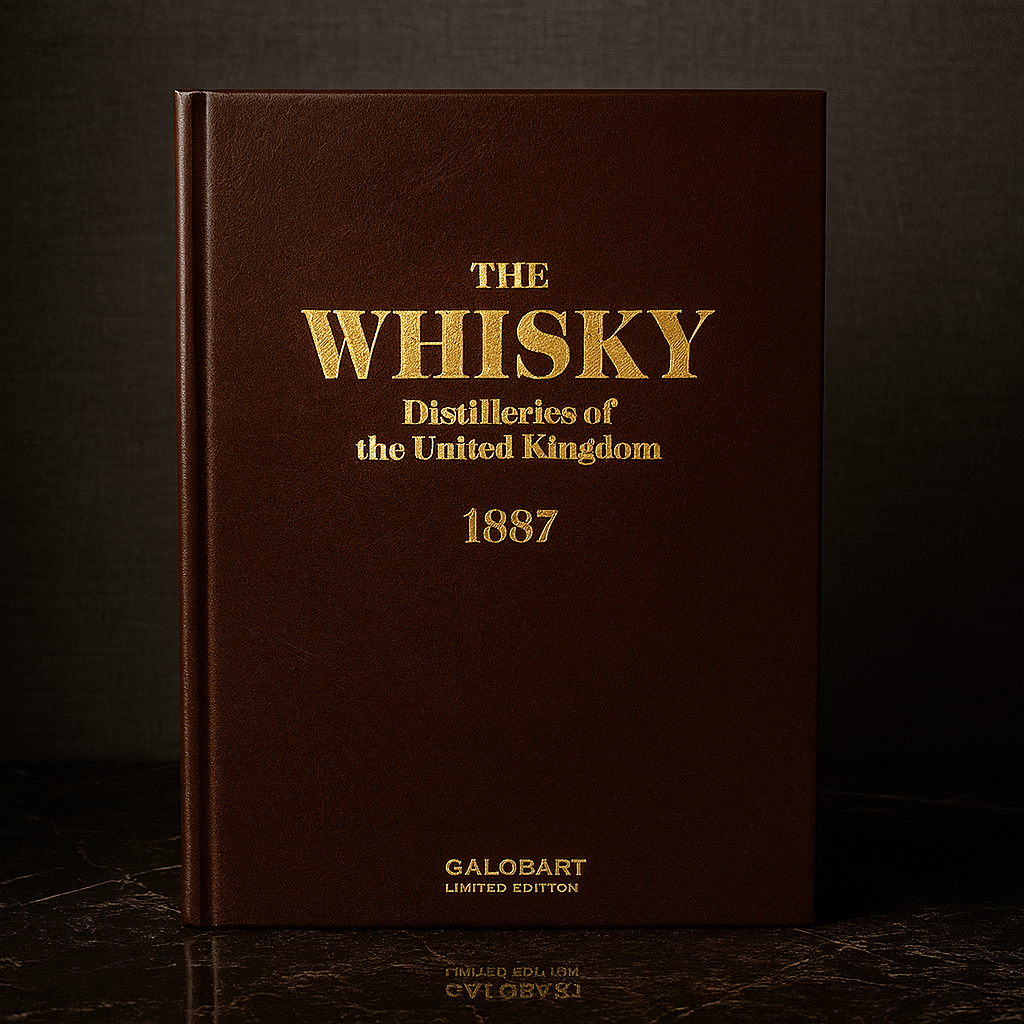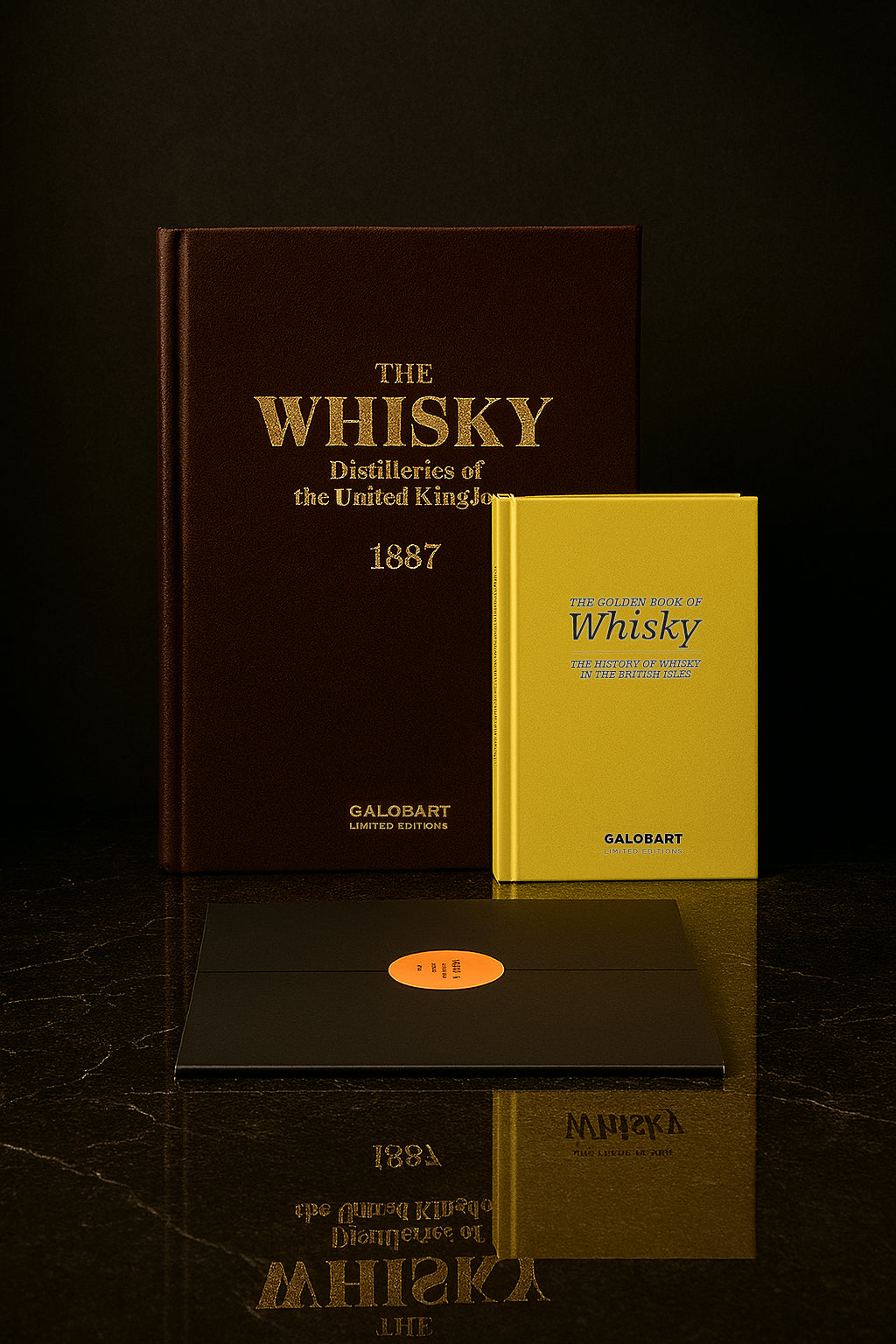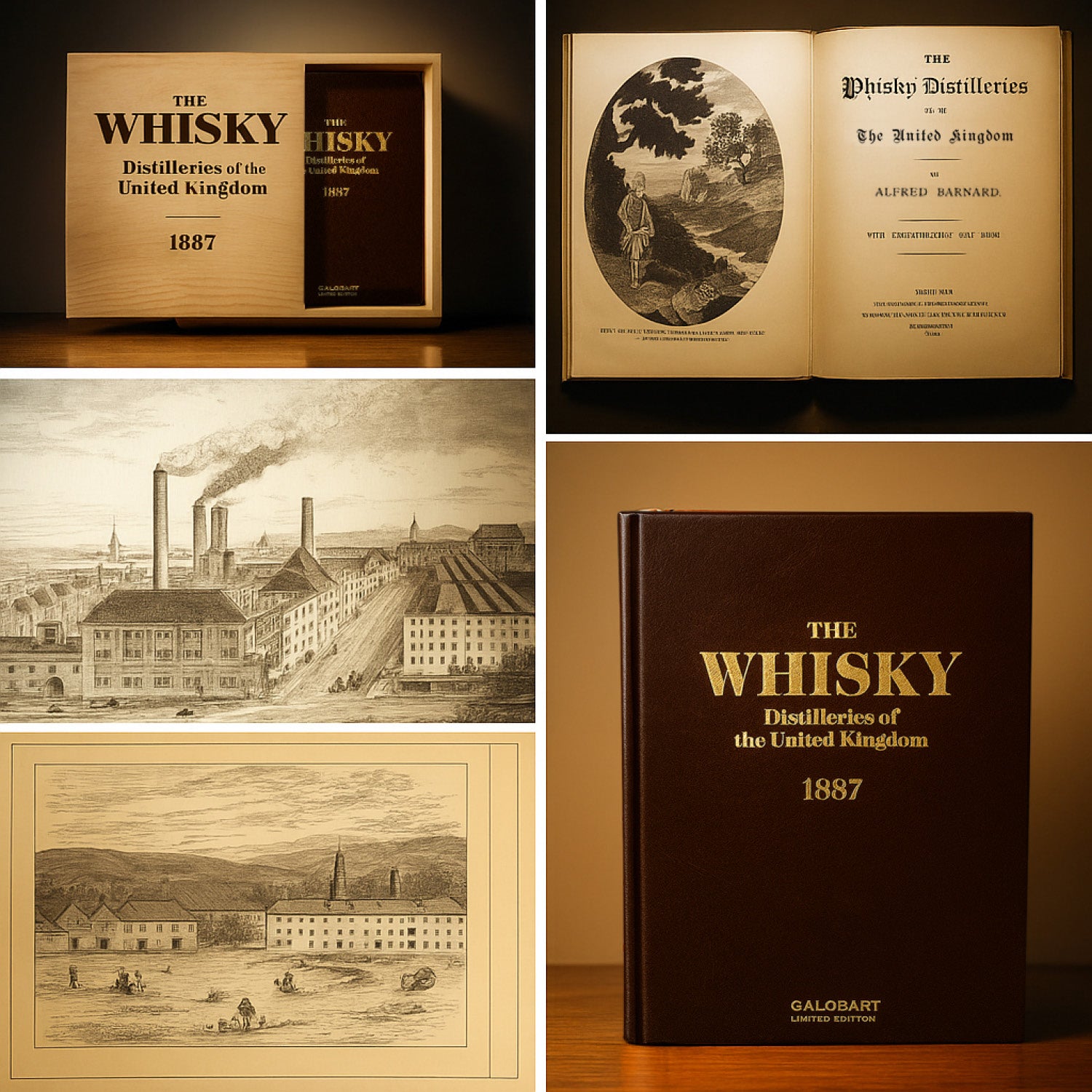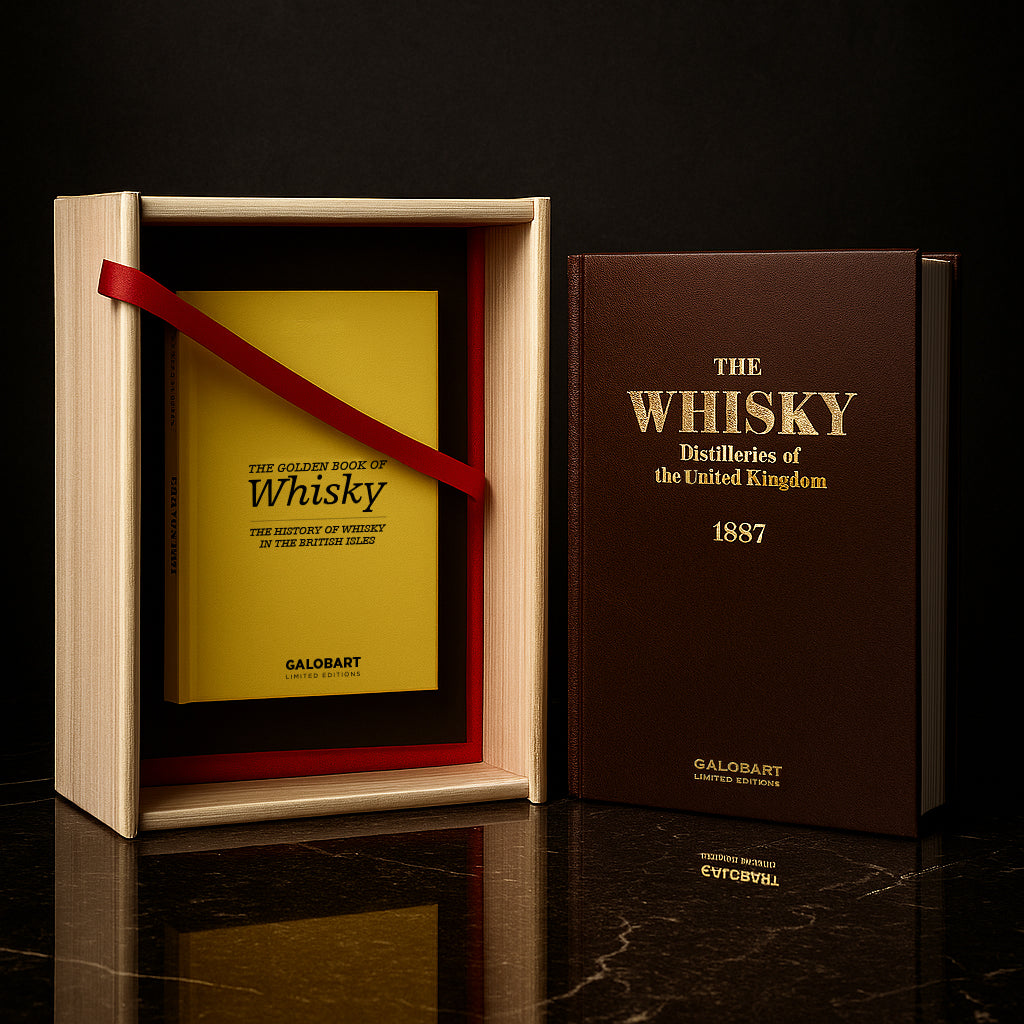“THE WHISKEY DISTILLERIES OF THE UNITED KINGDOM" by Alfred Barnard
New Limited Luxury Edition
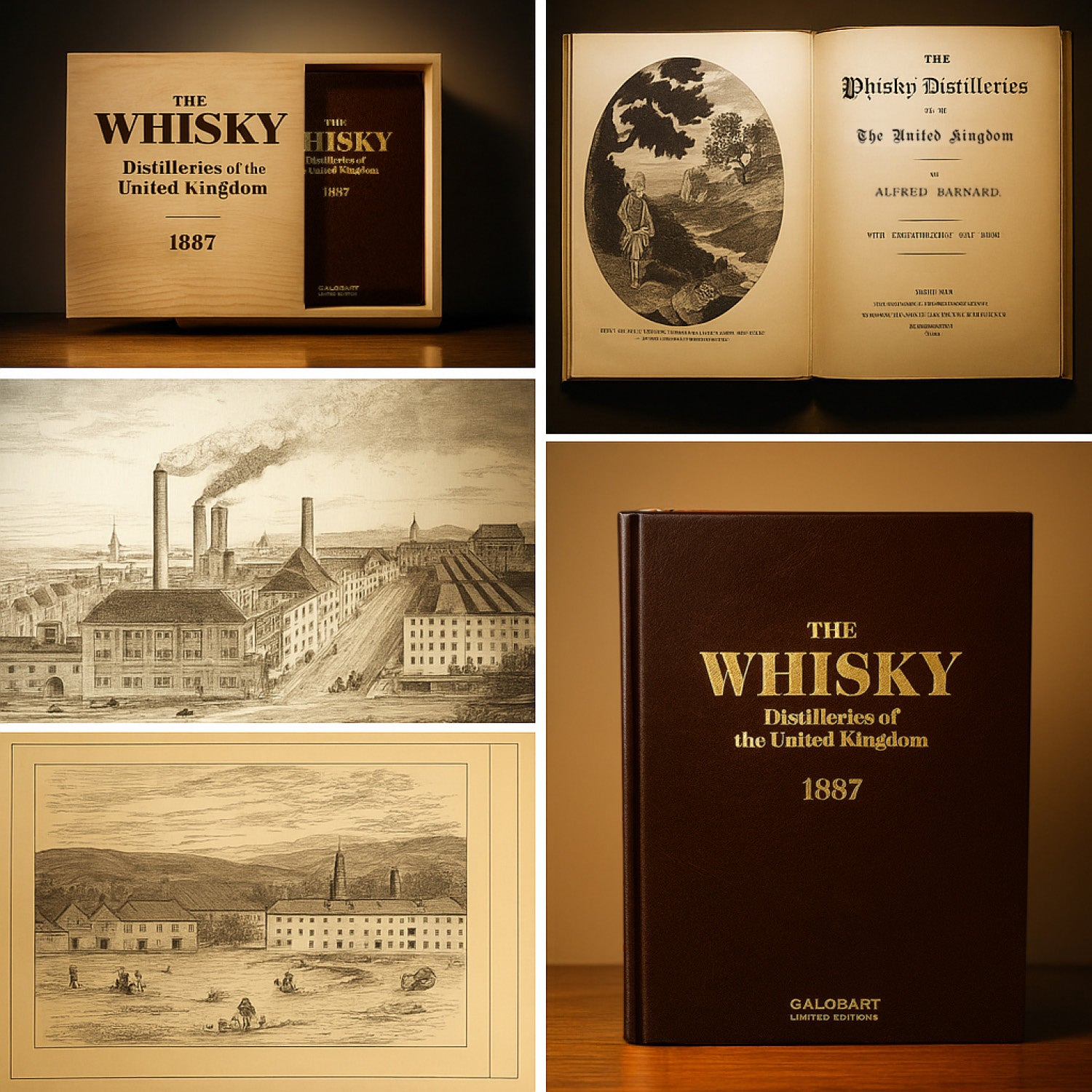

Galobart
The Whiskey Distilleries of the United Kingdom by Alfred Barnard
The Whiskey Distilleries of the United Kingdom by Alfred Barnard
Couldn't load pickup availability
Share
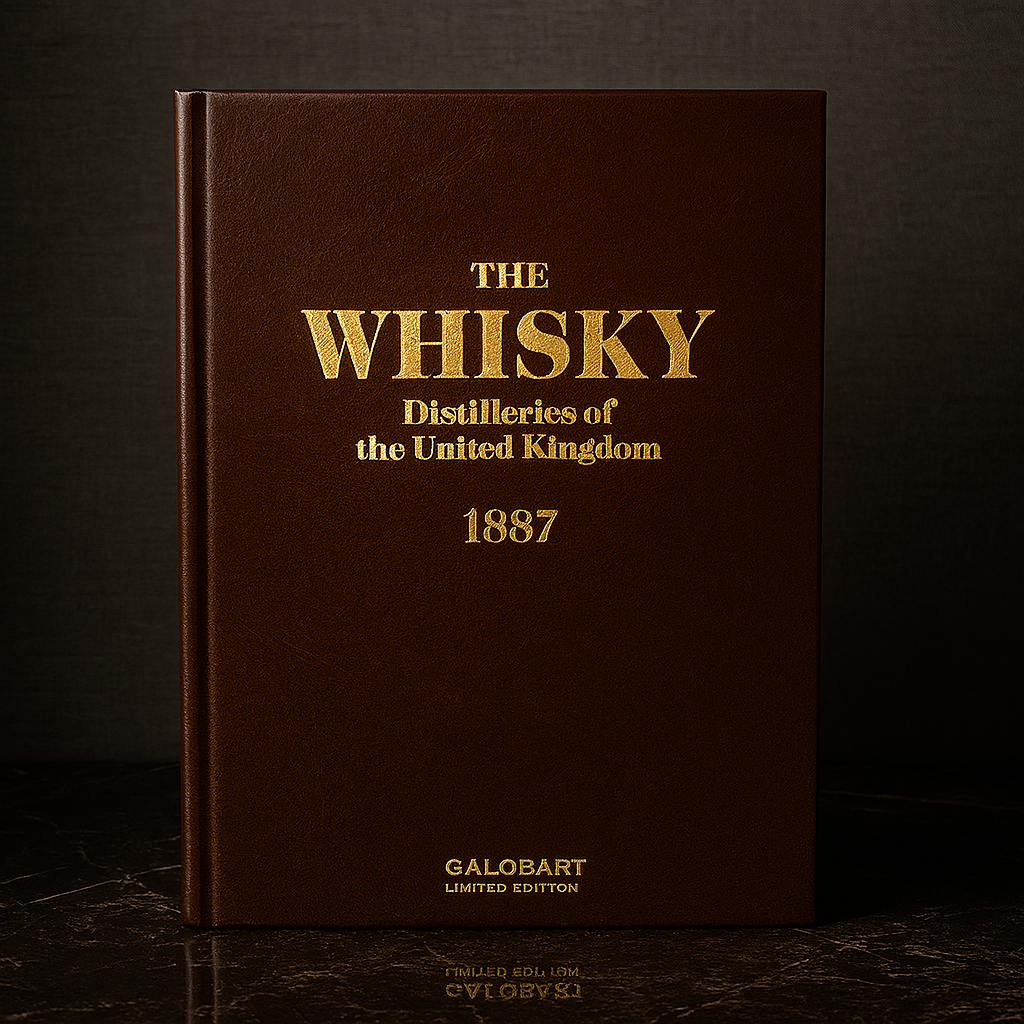
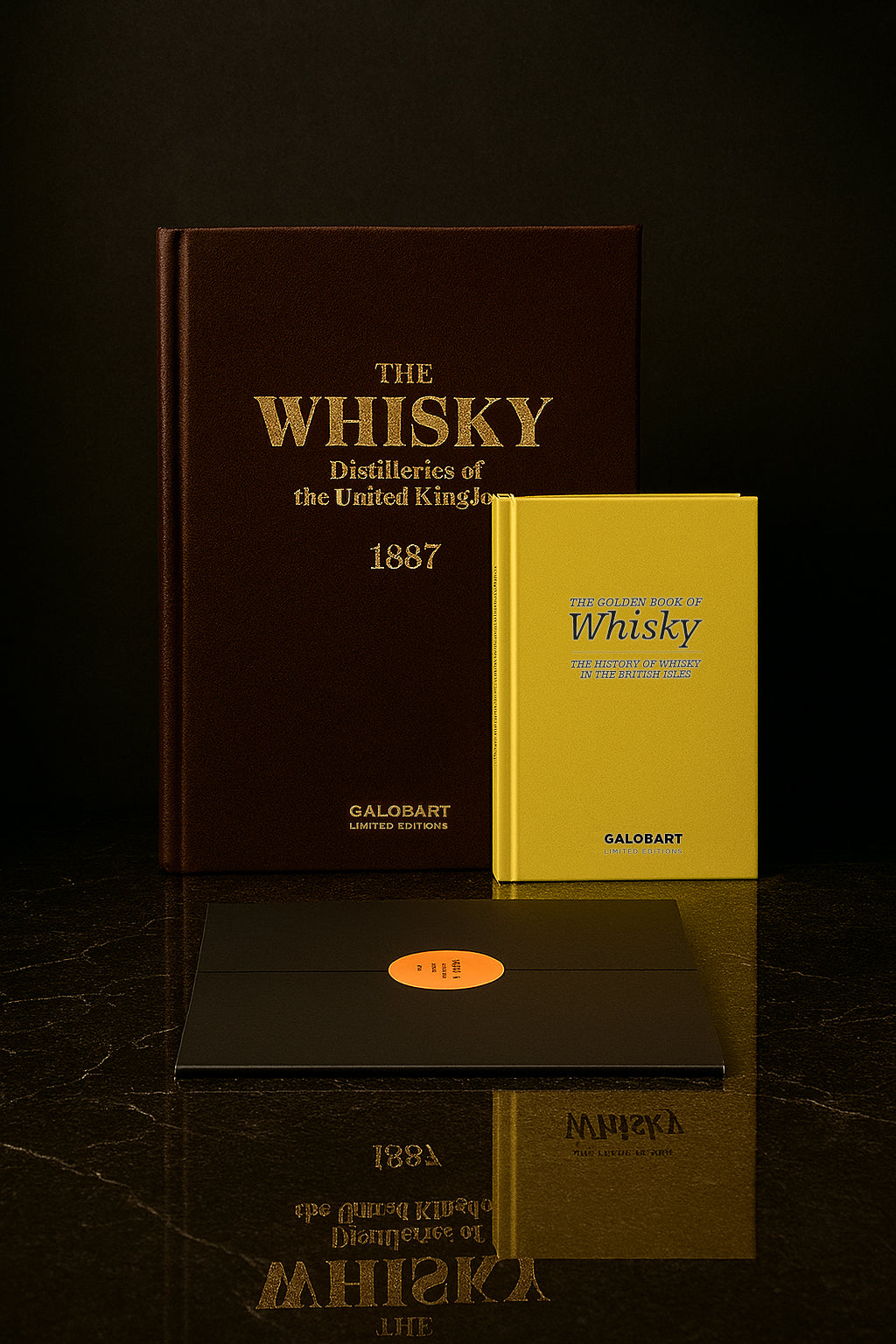
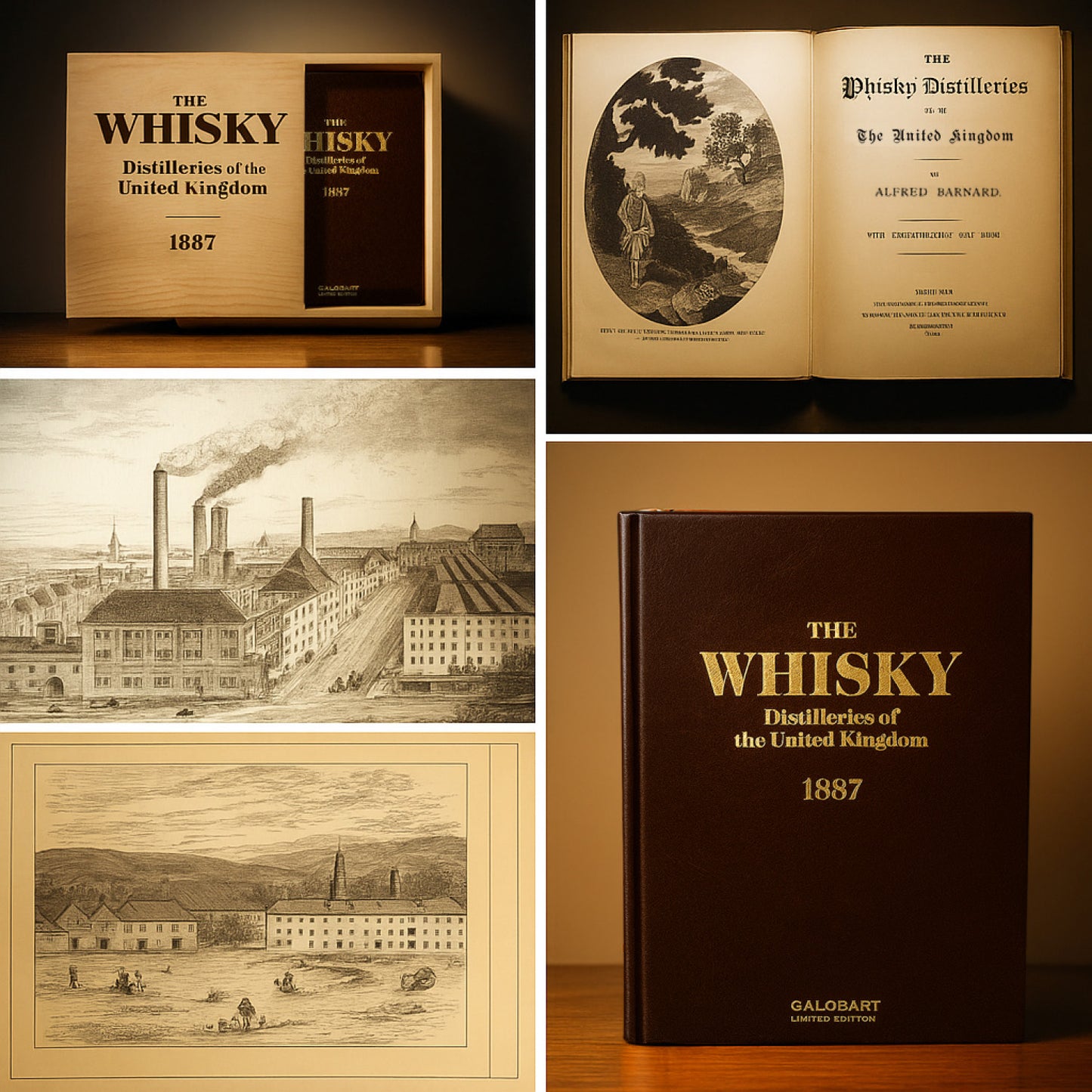

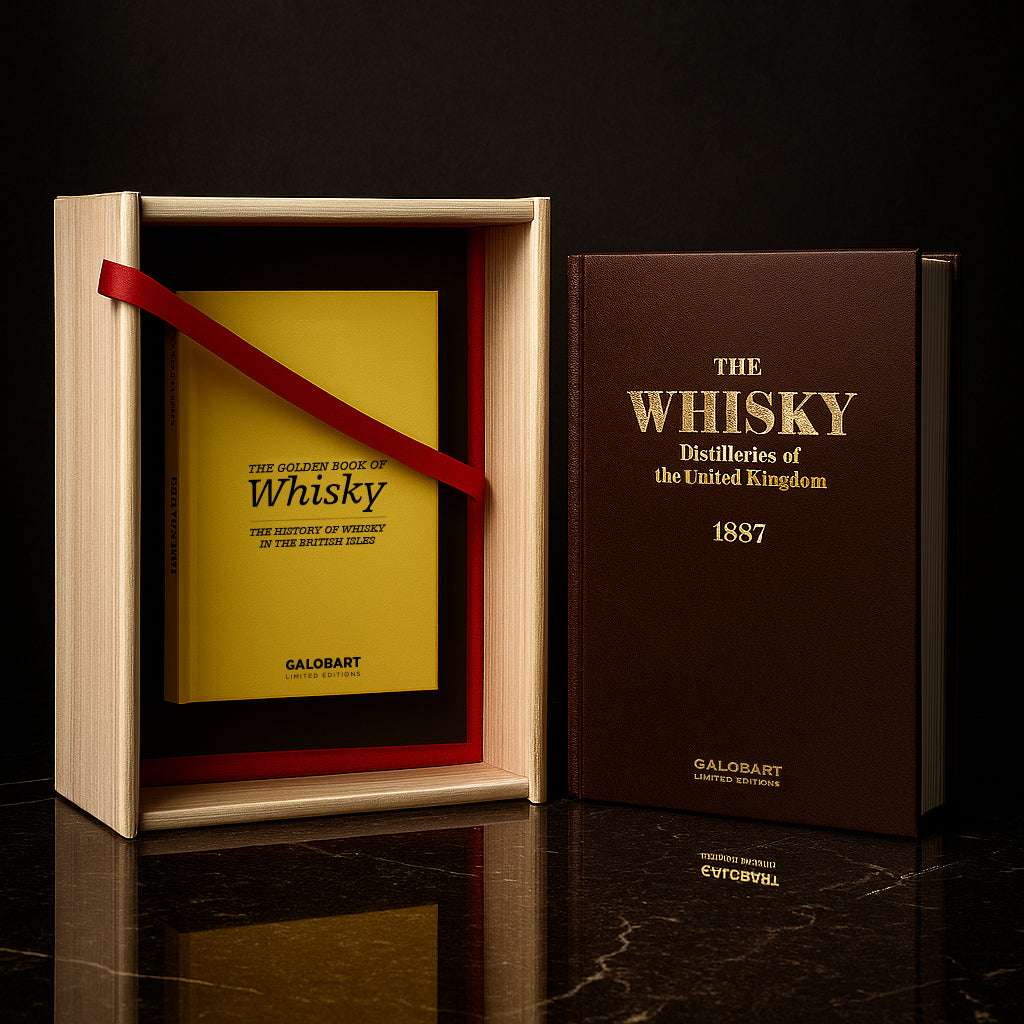
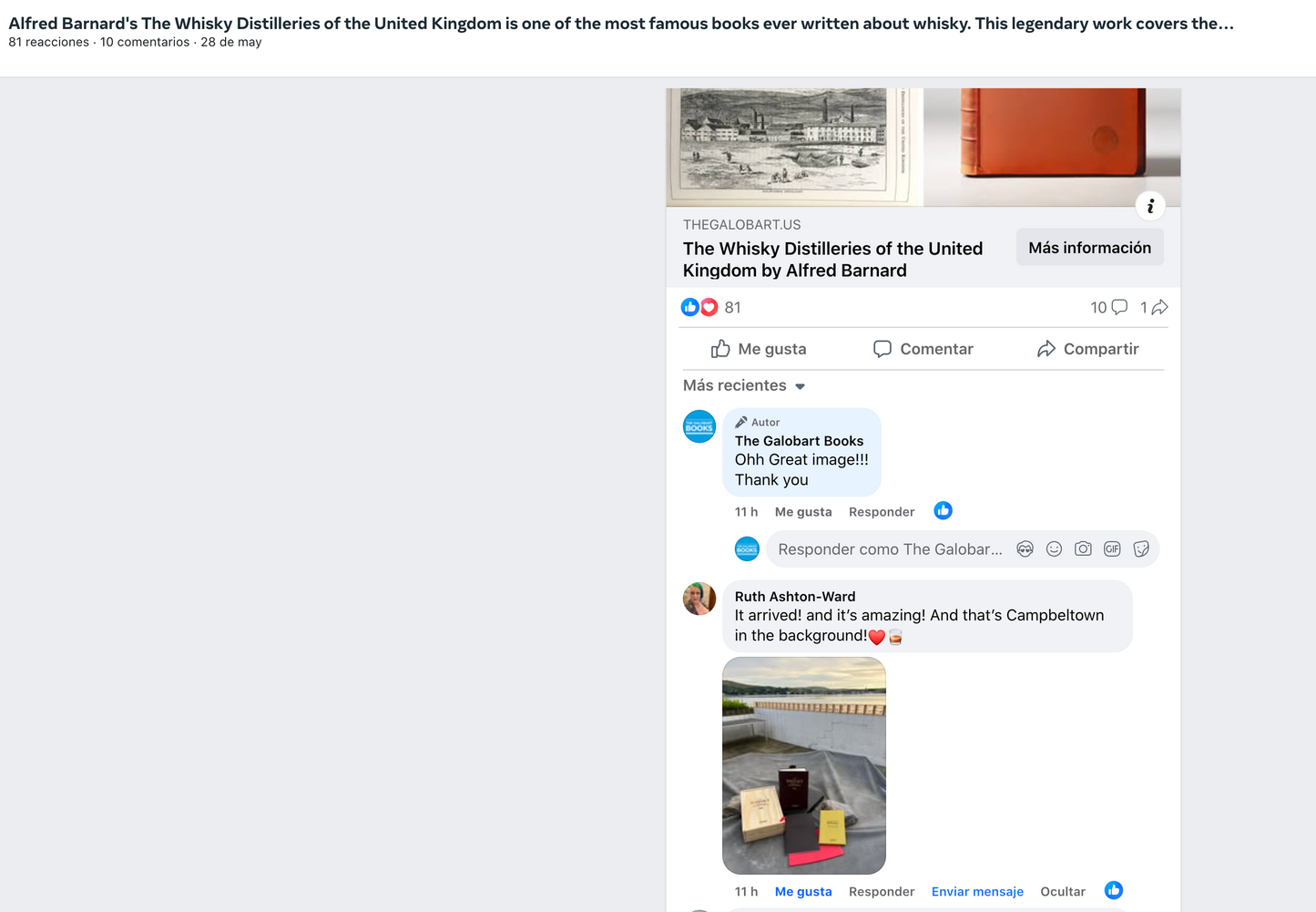
“THE WHISKEY DISTILLERIES OF THE UNITED KINGDOM" by Alfred Barnard
Only 887 numbered editions worldwide.
Each deluxe limited edition includes:
Facsimile book reproducing the 1887 original. Printed on Fedrigoni Luxury Paper. Hand-bound.
A bookcase made from an elegant wooden whiskey box.
Five limited-edition fine art prints from the distilleries for collection or framing.
Each wooden box is numbered by hand.
An elegant companion book (Soft Touch hardcover binding, in Pantone Gold).
TODAY €190€ | €300€
FREE SHIPPING
Receive it within a few days

Alfred Barnard 's "The Whisky Distilleries of the United Kingdom" is one of the most famous and comprehensive books ever written on whisky. Published in 1887 , this monumental work chronicles Barnard's journey to visit every working whisky distillery in the United Kingdom, offering an unparalleled insight into the whisky industry at the end of the 19th century.
Here's the book that started it all: A. Barnard's legendary work about his distillery tours of Great Britain between 1885 and 1887, visiting 129 Scottish, 29 Irish, and 4 English distilleries. He began his tour for the wine and spirits magazine Harper's Weekly Gazette , where it was published as a regular series. It was later published in book form in 1887.
The Book:
-
Author: Alfred Barnard was a British writer and journalist. He is best known for this book, which remains an essential resource for whisky historians and enthusiasts.
Published: 1887
- Scope: Barnard visited 162 distilleries in Scotland, Ireland, and England, detailing his findings in a narrative that combines travelogue with technical and historical knowledge about each distillery.
History of the Book
- Travel and Research: Barnard's travels covered thousands of miles across the United Kingdom, and his work documents not only the distilleries but also the landscapes, local customs, and production methods of each location. His detailed observations offer valuable insights into the technology, machinery, and architecture of the period.
-
Distilleries: The book offers detailed descriptions of 129 Scottish, 29 Irish, and 4 English distilleries . Each entry includes information such as:
- Historical Context: Barnard's book is important not only for its technical details, but also because it captures a time when the whiskey industry was expanding rapidly. Many distilleries that existed in Barnard's time are no longer operating, making his records an invaluable historical document.
- Illustrations: The book contains numerous illustrations and engravings, including detailed sketches of distilleries, machinery, and landscapes. These images add visual richness to the descriptions and help the reader grasp the grandeur and atmosphere of Victorian-era distilleries.
-
Focus on Scotch and Irish Whiskey: Most of the distilleries Barnard visited were in Scotland and Ireland, which were—and remain—the heartlands of whisky production. He distinguishes between the different styles of whisky made in these regions and analyzes the unique characteristics of local ingredients, such as peat, water, and barley.
- Knowledge: Barnard goes into significant detail about the whisky-making process at each distillery, describing fermentation, distillation, barrel aging, and other technical aspects. This makes the book a valuable resource for understanding how whisky production has evolved since the late 19th century.
-
Cultural and Personal Reflections: Along with the technical details, Barnard's personal reflections on the landscapes, people, and hospitality he experienced at each distillery add a human element to his narrative. His writing style is engaging and often enthusiastic, making the book enjoyable not only for historians but also for the general public.
⭑⭑⭑⭑⭑
Good afternoon, I received my book on whisky and it exceeded my expectations. The book, the box, and the materials are beautifully crafted with exceptional quality. Thank you!
Sincerely,
Colin Levy.
Massachusetts, USA

Influence and Legacy:
Historical record: Many of the distilleries Alfred Barnard visited no longer exist, having been closed or demolished over time. This makes his book a valuable historical record of the whisky industry in its early stages of industrialization.
Whisky Knowledge: The book is often considered one of the earliest examples of whisky appreciation. Barnard's detailed descriptions of flavor profiles, distillation techniques, and whisky styles helped lay the groundwork for the modern appreciation of whisky as an art and craft.
Collecting: This is a must-read for whisky enthusiasts, academics, and collectors alike.
Structure of the Book:
The book is divided into regional sections, with Barnard visiting distilleries in Scotland, Ireland, and England.
Each distillery entry includes not only a description of the production process, but also anecdotes about the history of the distillery and the families or companies that owned it.
It also addresses the importance of whiskey to local economies in rural regions, highlighting the industry's significance to communities.
Modern Importance:
Today, "The Whisky Distilleries of the United Kingdom" is considered a cornerstone of whisky literature. It offers a glimpse into a time when whisky production was less industrialized, allowing for comparisons with the large-scale production methods used today. For those interested in the cultural history of whisky or the industrial heritage of the United Kingdom, Barnard's work is a true source of information.
In short, Alfred Barnard's 1887 masterpiece is an invaluable reference for whisky lovers and historians, providing a glimpse into the whisky industry of the late 19th century with a level of detail and personal observation that makes it as enjoyable to read today as it was revolutionary when it was first published.
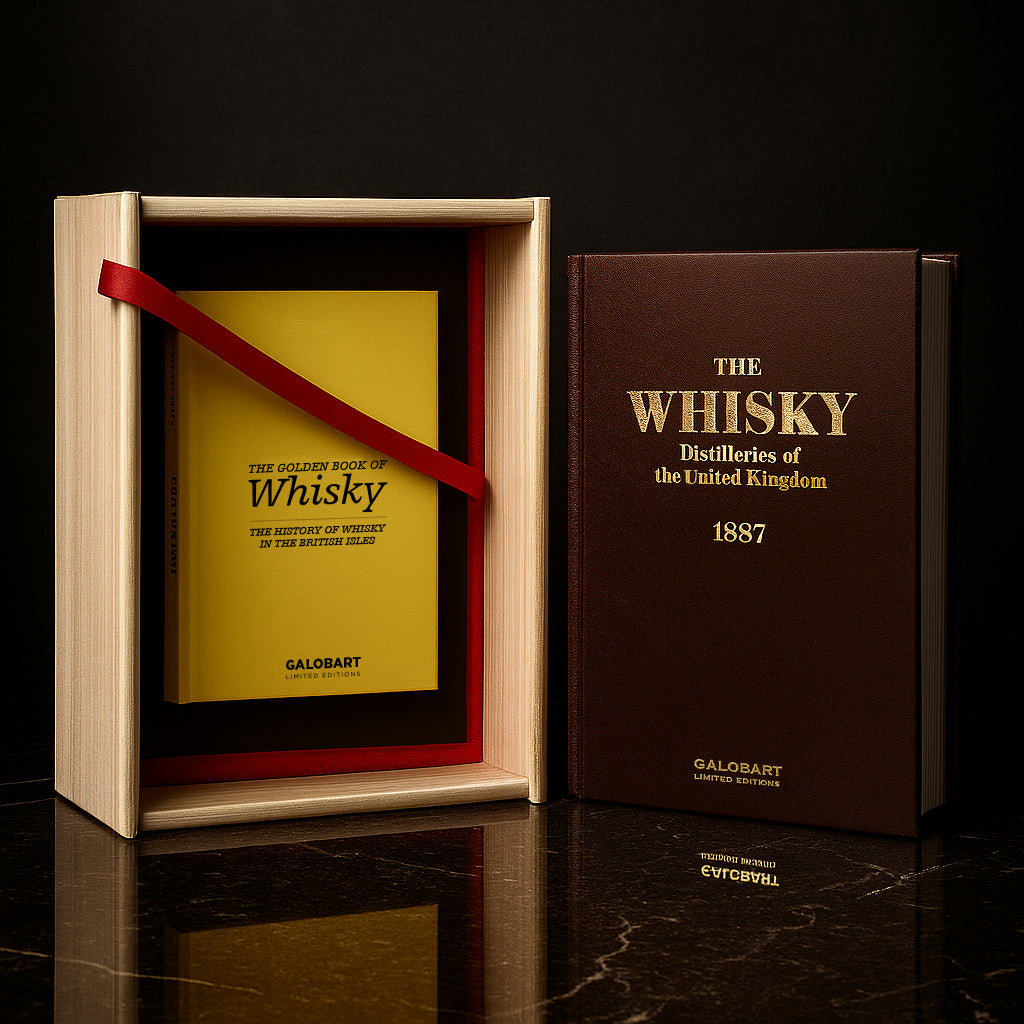
Pen drawing (1885) of the Lagavulin distillery on Islay.
There were two distilleries on this site. The first was founded in 1816 by John Johnston, and the second by Archibald Campbell in 1817. By 1837, only one distillery remained, occupied by Donald Johnston.
In 1908 another distillery, the Malt Mill Distillery , was built here, which closed around 1960. In 1962 the Malt Mill stills were incorporated into the Lagavulin still room.



